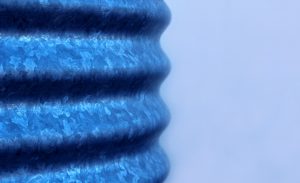
Have you heard of galvanized metal? From pipes and fencing to screws and sheet metal, countless metal products are galvanized during production. Unless you’re familiar with this metal finishing process, though, you might be wondering why it’s performed. Galvanization doesn’t change the structural properties of metal, but it’s still a useful process for several reasons.
What Is Galvanization?
Galvanization is a metal finishing process in which zinc is applied over the surface of a metal object. It receives its name from Italian physician and physicist Luigi Galvani. According to Wikipedia, some of the first recorded uses involved galvanized metal occurred during the 1600s when it was used to create armor in India.
While terminology surrounding the word “galvanized” has changed over the years, it’s now used almost exclusively to describe a metal finishing process in which zinc is applied over a metal object, which is typically made of steel, aluminum or iron.
How Galvanization Is Performed
Although there are different ways to perform galvanization, most companies use the hot-dip method. As the name suggests, hot-dip galvanization involves the submersion of a metal object in molten zinc. Zinc is first heated to temperatures of about 850 degrees Fahrenheit, after which the metal object is lowered into the molten bath.
After allowing submerging the metal object in molten zinc, the object is then removed. Exposure to oxygen triggers certain chemical reactions with the molten zinc, essentially create a new metal known as zinc carbonate. The zinc carbonate hardens over the surface of the metal object, forming a relatively thin but strong protective shell.
Zinc is used in galvanization because it’s more chemically activate than other metals. As a result, molten zinc is able to create a stronger reaction when exposed to oxygen.
The Purpose of Galvanization
Galvanization is performed to primarily to protect metal objects from corrosion. It forms a thin but highly protective coating over the surface of metal objects, protecting the metal from corrosion-triggering substances and elements. Without galvanization, for example, metal objects may rust or corrode when used outdoors or in other humid environments. As airborne moisture comes into contact with the metal, it triggers corrosion through oxidation. Over time, this corrosion can eat away at the metal, creating holes while jeopardizing its integrity in the process. Galvanization, however, forms a barrier over metal objects to protect them from corrosion-triggering substances and elements, including airborne moisture vapor.
